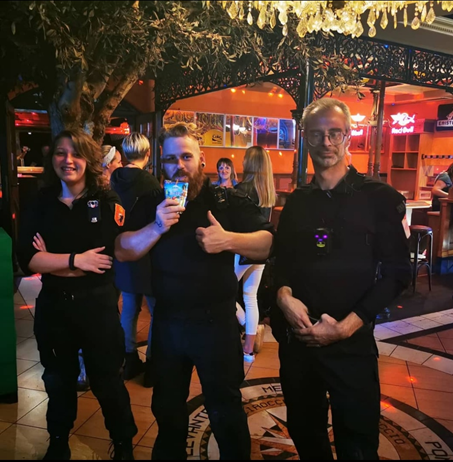In 2018, the body worn cameras management system of a public security agency in Sweden was ready to go online to realize the docking of the body worn cameras management system. This marked that the public security agency became the first body worn cameras management system covering all police types to be built. Use the body worn cameras management system to uniformly manage all the data collected by body worn cameras.
As early as 2010, the public security agency of a certain city began to equip the police with body worn cameras. This time, body worn cameras have been upgraded on the basis of the original generation. In the improvement of the first-generation body worn cameras, the memory is small, the pixels are low, the data export time is long, and there is no night vision function. Many new elements have been added to make the new body worn cameras more humane and scientific. OTC-Z13 can be said to include many "more"! One is light weight: its volume does not exceed 200 cubic centimeters, and its weight does not exceed 170 grams. Such light equipment will not cause a burden on law enforcement personnel at all. At the same time, OTC-Z13 body worn cameras have super battery life, which can withstand continuous video recording at 1080P 30fps for 10 hours. The second is the high image quality: the 140-degree wide-angle setting can record complete scenes, up to 1296P30 frames during recording, to ensure the quality of the recording. The third is with night vision function: equipped with infrared night vision probe and built-in LED white light, it can also perform normal color recording in the dark in time, and the distance is up to 15 meters. Fourth, it has a positioning function. The body worn cameras with GPS global positioning function can realize real-time global positioning. Fifth, it is waterproof and anti-drop. It can also be used normally from a free fall from a height of 2 meters. Heavy rain will not affect the police's law enforcement duties.
After the body worn cameras were put into use, the public security agency also set up an intelligent data docking station for each law enforcement unit with independent office locations, and each collection workstation can be connected to 16 body worn cameras at the same time. After the police are off work, they only need to plug the body worn cameras into the port of the workstation to realize the functions of automatic import, automatic emptying, automatic charging, and automatic time calibration. While it is convenient for the police to use, it also realizes the workstation and information management system. For data collision, the automation of data collection, data screening and data transmission is realized by automatically transmitting the associated data to the back-end server of the information management system.

In order to further promote the combination of body worn cameras and law enforcement duties, and fully realize the visualization of law enforcement supervision and the informatization of management assessment, they specially built a "body worn cameras management system" based on cloud storage and cloud computing. This is a cloud system that can implement system application functions such as user management, browsing and query, statistical filing, and assessment standards. In other words: the use of this management system can completely record the work of the police, from the front-line law enforcement police to the city bureau leaders can view it according to their authority. At the same time, the automatic extraction of abnormal law enforcement data and the assessment and early warning have changed from accountability for irregular law enforcement actions to pre-supervision and intervention during the event. I believe that in the future, through the perfect combination of technology and police force, after the body worn cameras management system is completed and put into use, it will effectively promote the standardization of law enforcement and improve the evidence chain. It will also greatly mobilize the enthusiasm of the civilian police, improve the pertinence of the police's service, and effectively reduce the randomness and freedom of the police's law enforcement management, so as to realize the openness and transparency of police activities.
